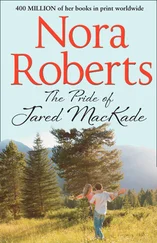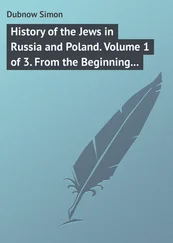A third approach to learning about traditional societies shares the goals of oral reconstruction, insofar as it seeks to view the societies before they were visited by modern scientists. While scientists have been among the first outsiders to contact some traditional peoples—such as the “discovery” of the Baliem Valley Dani by the Third Archbold Expedition from the American Museum of Natural History in 1938—more often scientists have been preceded by government patrols, traders, missionary linguists, or explorers. That was obviously true for the vast majority of traditional societies of the New World, Africa, Australia, and the Pacific islands, because they were “discovered” by Europeans from AD 1492 until the early 20th century, before modern anthropology had coalesced as a discipline doing fieldwork. Even the recent first contacts of New Guinea and Amazonian tribes from the 1930s until today have usually not been made by scientists, because of the resources required and the dangers involved. By the time scientists arrive, the tribal culture has already begun to change as a result of contacts.
But we may still learn a lot from the anecdotal descriptions left by those first scientifically untrained visitors. The obvious disadvantage is that their accounts are less systematic, less quantitative, and less informed by rigorous method and the existing body of knowledge about other tribes. A compensating obvious advantage is that the resulting information refers to a tribal society less modified than when encountered later by scientists. A less obvious advantage is that the unsystematic and unscientific nature of those first observations can actually be a strength. Untrained visitors often describe broadly whatever strikes them, and thereby may discuss facets of a society that would be ignored by a scientist sent out with research support to study some particular phenomenon.
An example is a remarkable book ( Dschungelkind ) about Indonesian New Guinea’s Fayu people, written by a German woman called Sabine Kuegler. During my first visit to Indonesian New Guinea in 1979, my helicopter pilot told me of a terrifying visit that he had recently made to a just-discovered group of Fayu nomads on behalf of a missionary couple, Klaus and Doris Kuegler. At the invitation of the Fayu, the Kueglers then brought their three young children to live among the Fayu and were the first outsiders that most Fayu saw. The Kueglers’ middle daughter, Sabine, thus grew up among the Fayu from ages 7 to 17, at a time when there were still no outsiders there other than the Kuegler family. On moving to Europe to pursue a European education and to become a European, Sabine published in 2005 a book about her experiences and observations.
Sabine’s book lacks data tables, tests of rival hypotheses, and summaries of the current state of some subfield of anthropology. Instead, readers of her book will gain a vivid sense of Fayu life just after first contact, including arrows whizzing through the air, dangers, accidents, and deaths. Because Sabine’s playmates were Fayu children and she grew up partly as a Fayu herself, her book approximates an autobiography of a Fayu, but one endowed with a dual perspective as a Fayu and a Westerner. Sabine was thus able to notice Fayu characteristics—such as their sense of time, physical difficulties of Fayu life, and the psychology of being a Fayu—that a Fayu would take for granted and not bother to mention. Equally moving is Sabine’s account of returning to Europe, and of seeing European society through her partly Fayu eyes, which let her notice features of European life (e.g., issues of dealing with strangers, or the dangers of crossing a road) that a European would take for granted. Perhaps, some day, a scientist will visit the Fayu and will describe some aspect of their society. But, by then, the Fayu will be drastically different people from those encountered by the Kueglers in 1979. No scientist will be able to repeat Sabine’s experience, and to describe what it was like to grow up with and to think and feel as a nearly traditional Fayu.
The remaining method for learning about traditional societies, and the sole source of information about past societies without writing and not in contact with literate observers, is archaeology, whose advantages and disadvantages are the opposites of those associated with modern observers. By excavating and radiocarbon-dating a site, archaeologists can reconstruct a culture up to tens of thousands of years before it was contacted and changed by the modern world. Thus, concerns about perturbing effects of modern contact and of the resident sociologist disappear completely. That’s a huge advantage. The corresponding disadvantage is that fine detail, such as daily events and people’s names, motives, and words, is lost. Archaeologists also face the disadvantage of more uncertainty and more required effort in extracting social conclusions from their physical manifestations preserved in archaeological deposits. For instance, archaeologists attempt to deduce individual inequality in social status and wealth indirectly from differences in the buried grave goods and sizes of tombs in cemeteries excavated laboriously over the course of several field seasons. A modern ethnographer might observe such inequalities directly in one day of fieldwork—but the results would apply to a society changed to an uncertain degree by modern contact.
Thus, our four methods for understanding traditional societies differ in their strengths and weaknesses. We can have increased confidence in conclusions if all four methods can be applied and yield similar results. For example, we have information about tribal wars from modern scientific observations (e.g., Jan Broekhuijse and Karl Heider’s detailed accounts of Dani warfare described in Chapter 3), from oral reconstructions (such as those by Polly Wiessner and Akii Tumu), from anecdotal accounts (such as Sabine Kuegler’s among the Fayu), and from archaeological evidence (such as excavated battle armor and skulls split by axes). When these four approaches disagree in their conclusions, we have to figure out why: perhaps the society changed with time or under contact.
The page numbers in this index refer to the printed version of this book. To find the corresponding locations in the text of this digital version, please use the “search” function on your e-reader. Note that not all terms may be searchable.
Note: Plate numbers refer to insert illustrations. Plates 1–28 appear between pages 148 and 149; plates 29–47 appear between pages 308 and 309.
Aboriginal Australians, 14, 26 fig. , 156, 228, plate 2
elders, 214, 230
food scarcity and storage, 309 table , 315
health, 432–33, 439 table , 446
information sources, 477–78
languages, 380, 381, 384–85, 397–98, 406
See also specific peoples
accidents, 30, 245, 278–83, 279 table
avoidance and vigilance, 283–86
causes, 278–83, 279 table
See also dangers; risk
Ache Indians, 14, 27 fig. , 51, 292, 456, plate 10
children, 178, 199, 286
elders, 212, 214, 215, 216
environmental hazards, 278, 279 table , 280, 281, 285–86
food scarcity, 301
violence, 286, 290
advertising, age and, 226, plates 23, 24
affluence, 116–17
disease and, 412–13, 430, 432, 433, 436, 439 table , 440
religion and, 354, 368
Africa and African peoples
diabetes, 433, 438 table , 450
language diversity, 371, 398
map, 26 fig.
warfare, 144, 151–52
See also specific groups
age cohorts
among children, 201
ratio of elderly to youth, 231–32
Читать дальше










